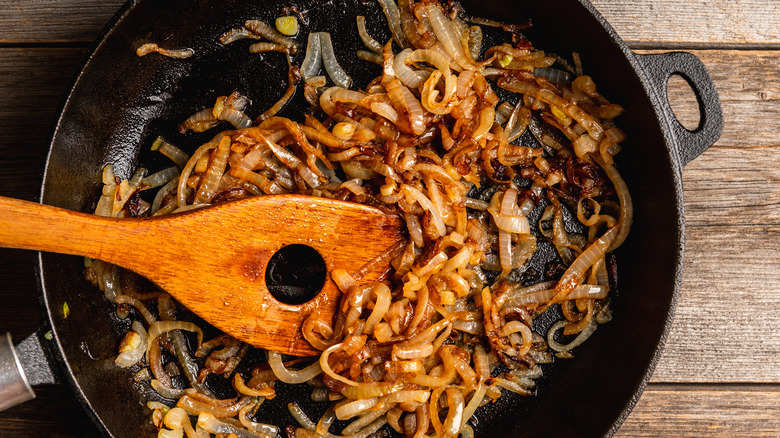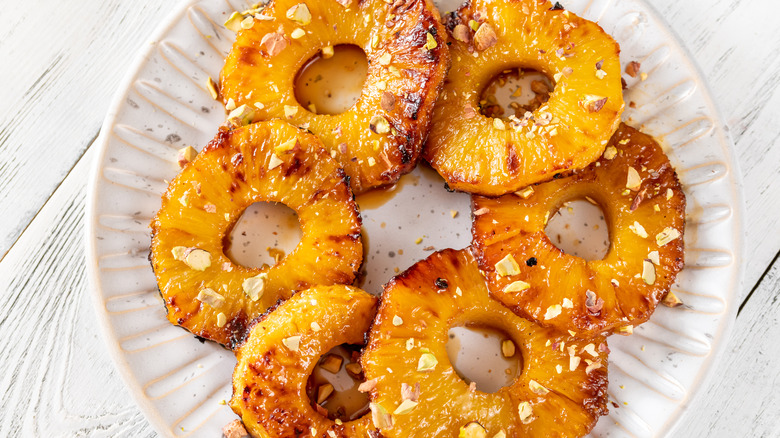Things You Never Thought To Caramelize But Should
Anyone who's ever tried their hand at caramelizing knows the magic the process provides. Caramelization is the result of what happens to sugars as their molecules break down over high heat (via MasterClass). According to the Science of Cooking, it's "a type of non-enzymatic browning reaction. As the process occurs, volatile chemicals are released producing the characteristic caramel flavor."
"Caramel" is best known in candy form, but the process can be used for anything that contains sugar molecules. Different forms of sugar break down at different temperatures, resulting in different cooking approaches and flavors — though caramelization generally yields a nuttier, more savory taste than its original. Like the Maillard Reaction, it makes the food brown and flavorful, but it's a different process (via MasterClass) since caramelization happens at a higher heat and doesn't involve amino acids (though sometimes both processes happen at once, per The Difference Between). That chemical change explains why the flavor of condensed milk differs from that of dulce de leche, its caramelized cousin (via Southern Living).
Onions are a great example of the glow-up that caramelizing provides. A sharp-edged vegetable becomes soft, creamy, and unctuously sweet, thanks to long and slow exposure to heat, which draws out and transforms the onion's sugars. Caramelizing is especially popular with onions, but the same basic principle can be applied to anything with sugars: essentially, all fruits and vegetables — and then some.
Caramelized goodness: Let 's count the ways
The best candidates for caramelization are those with a high sugar content (via Food Hacks). The process is simplest with vegetables that are naturally high in sugars, but neutral vegetables will take on surprising new flavors when caramelized (as caramelized onions attest). Carrots, beets, and sweet potatoes are obvious choices and caramelize easily. While vegetables like potatoes and endives have fewer natural sugars, the difference in flavor that caramelization provides makes the change no less dramatic. To maximize the impact, cutting hard vegetables into small pieces helps expose their surfaces to heat and move them along toward tawny goodness.
The list of fruits to caramelize is pretty much endless, but figs, pineapples, apples, bananas, and pears are a great starting point (per MasterClass). Including some fat in the process adds additional flavor; browning the fruit in butter is often the most flavorful and simplest way of achieving this. Since fruits are high in natural sugars, you don't need to add sweeteners, but if you want to gild the lily, extra sugar means you'll get real caramel along with your caramelized fruit, like caramelized bananas.
Adding a sugar layer to other foods provides endless options for caramelization, and is especially rewarding with salty, savory foods that provide some nice contrast for the caramel, like bacon (this candied bacon recipe is just one example).
Caramelization is further proof that chemistry is your friend. Thanks, science!

